Fitness App Development: Essential Steps for 2025
Discover how to plan, design, and build a successful fitness app with the right features, technology stack, cost estimation, and helpful tips from experts. Learn about advanced features, the potential to monetize fitness apps, and your typical terms of service for these solutions.
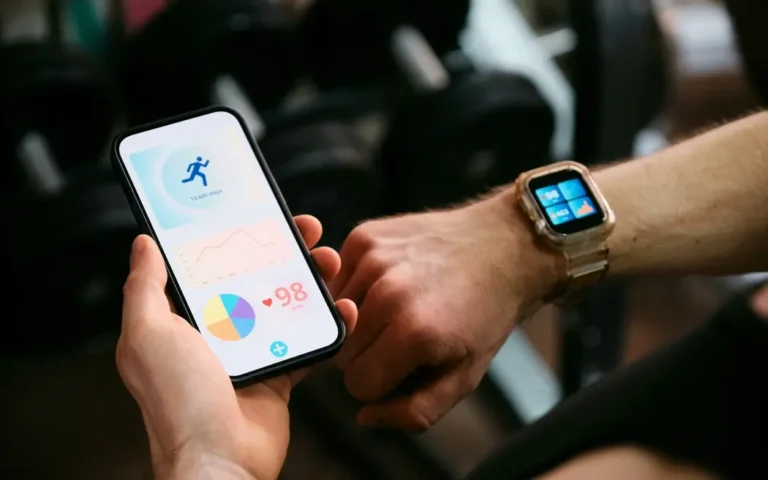
fitness app development
Fitness App Development 2025: The Digital Revolution in Health and Wellness
Within the past ten years, the paradigm of fitness has evolved from merely a physical undertaking into a digital lifestyle. You know it’s true. Daily workouts, tracking body composition, measuring caloric intake, and even counting sleep hours can all take place in one app, and this is not an emerging trend. In 2025, fitness app development has become one of the hottest and most profitable segments in the tech industry, merging personal health, AI, and community engagement into a single seamless experience.
Our society is increasingly demanding control over our time, our bodies, and our overall wellness. Today’s consumers are not waiting for a gym or a personal trainer. They are looking for non-traditional smart fitness solutions that are personalized, adaptive to their goals, automate their progress, and respond immediately. This demand has resulted in more and more entrepreneurs, start-ups, and even larger organizations seeking and hiring fitness app developers, or sometimes even an entire team of developers, to take their fitness or health or wellness solution to market.
Today, users don’t just want a digital tool. They want an app that acts like a positive, guiding partner. Ultimately, this is why the most successful fitness app development projects balance emotion with technology. The apps that make a difference are the ones that connect with people’s hopes and dreams.
Throughout this guide, you will learn how to properly plan, design, and build a fitness app that doesn’t just get users to download your app but also builds user retention.
Why the Demand for Fitness Apps Is Growing in 2025
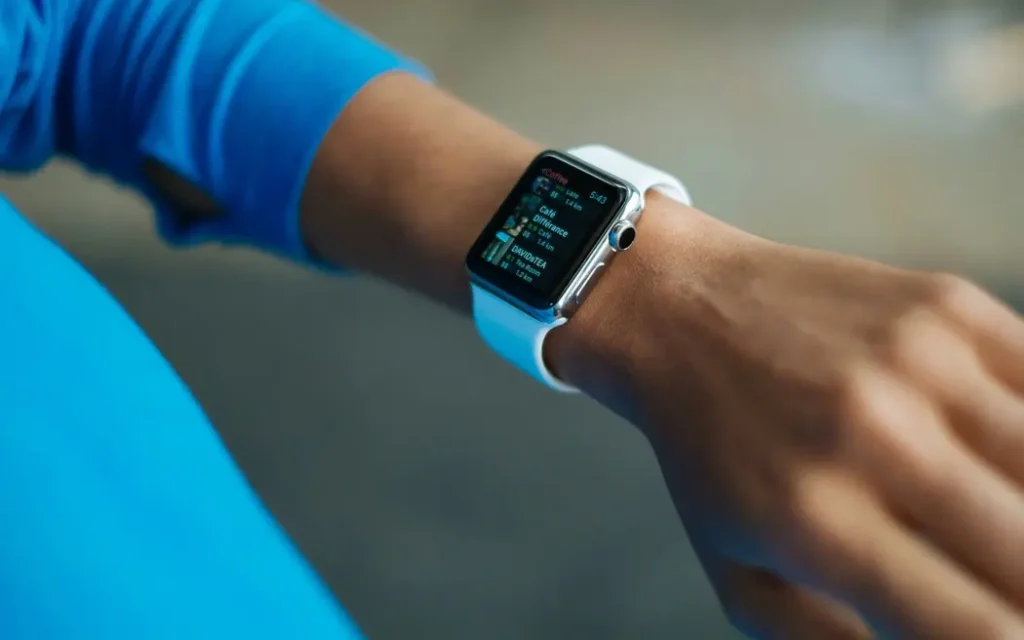
Fitness has always evolved in some way or another with lifestyle trends. But what we are seeing in 2025 is different and signifies real transformation with respect to culture and technology. It is becoming clear that people are not thinking of fitness as an occasional hobby anymore. Fitness is part of their identity and social life, as much as it is their daily routine. The transition we’re seeing will be at the forefront of the immense growth of fitness app development around the world.
Digital Fitness
Let’s face it—convenience is what matters in our lives. The gym can be right next to you, but the easy choice is to just pull out your phone and start a personalized workout through an app. With remote workouts and on-demand fitness classes, with AI options for coaching, a person can work out while home or travelling. It’s opened up the possibility to stay fit without having to learn or pay expensive gym fees or memberships.
Smart devices such as Apple Watch, Fitbit, and Garmin have made tracking the fitness level just another part of your lifestyle. You exercise and can see progress instantly, just as it is synced with your favorite apps. This integration between wearables and mobile platforms has sparked a new generation of fitness app developers to create smarter, more connected experiences that blend real-time tracking with behavioral insights.
Market Trends Driving Fitness App Development
The fitness app space is still projected to grow, and the market will remain large until 2030, when the market will be worth billions annually. Why? Because fitness apps provide a solution to real problems: lack of motivation, lack of time, and lack of guidance and accountability that is personalized.
In 2025, individuals are choosing more and more hybrid models in the fitness world. Meaning that people are going to the gym but also selecting app-based recommendations for their training plans through the app. Social fitness has continued to explode. Leaderboards, community challenges, and virtual competitions make workouts fun and habit-forming. Startups will have endless opportunities to design innovations and divergences with these new trends.
Opportunities for Entrepreneurs and Businesses
If you are the owner of a business or startup, now is the time to enter into this market. Be it a niche yoga app, a running tracker, or a complete digital fitness platform, the audience is already here and in demand. Users want personalization, and they want to connect with others and pay for it.
For many, the next step is to hire a solid fitness app developer or even partner with a team of professional fitness app developers who know both the tech and the psychology of engaging fitness users. With an outstanding blend of design features, AI application, and community engagement, your fitness app would replace someone’s daily reliance on apps.
In short, the demand is not only growing—it is changing. More people and users do not want to just track calories or steps anymore. They want to belong to something that inspires and empowers them. This is where great fitness app development comes into play.
Basic Features Every Fitness App Should Include

As you contemplate embarking on the journey of creating your fitness app, the first step is to get the foundation right. The core features that are included in every successful app. These are the basic building blocks that make your product useful, enjoyable, and functional. If your product does not have these features, it does not matter how unique your idea is, because even the most active user will not turn into a lifetime user of your app. Let’s explore the starter essentials.
User Profiles and Onboarding
The user’s experience begins the minute they open your app. If you can deliver a frictionless onboarding process, this sets a bar for what happens next. Make it simple for the user to register, either through email, social media, and their wearable device.
Then, personalization. Ask the user for their goals, level of fitness, preferred workout format, and equipment available. Once you have the user specify all of this information, you have essentially set the app to personalize the experience from day one. Smart fitness app developers may have adaptive onboarding flows to elicit information in a conversational context. They are setting the stage for the user to feel they have a friendly coach walking and guiding them through a conversation.
Do not forget; first impressions matter. If the onboarding is intuitive and, to the user, has them ready, the user is far more likely to feel compelled to complete their first workout.
Exercise Plans and Training Programs
This is the main component of most fitness applications. Your app should provide users with systematic exercise plans that they can follow every day or week. Providing diversity in the programs, whether it is for strength training, yoga, or HIIT programs, will make your app appealing to most people.
The best apps will also allow the users to toggle between predefined plans and professional workouts and training programs. This is the way to keep your users engaged over time. A reasonable recommendation engine can even analyze a user’s performance and provide new recommendations to prevent boredom.
Your fitness app developer can further build in filters by goal and duration, making the user experience navigation intuitive.

Activity and Health Tracking
No fitness app is complete without robust tracking ability. This is why users open your app every day. They open your fitness app to see their progress, numbers, and results.
Some important metrics of tracking would be, but are not limited to, the following: steps taken, calories burned, distance, heart rate, and sleep. Utilizing APIs that are provided by Apple HealthKit or Google Fit can seamlessly sync with wearables or smartphones.
An example of this would be a user finishing a short run on their smartwatch, and your app will automatically populate into the app, analyze the average pace, and update the user on their weekly health data summary. That’s the type of functionality that would build loyalty.
Community and Social Elements
Fitness is personal, but it relies on your friends for motivation. The social layer of your app will quickly increase user engagement. Think about friend lists, leaderboards, and community challenges to allow users to compete and connect with each other in a fun way where they can celebrate each other’s accomplishments.
Once you bring in the gamification of the social aspects, you create an accountability system that is key to retention. The more progress users feel in a social community, the more they will work to achieve their goals.
So, if you want your app to be as close to living and breathing as you can get, make it social. Even simple features like sharing users’ progress or a leaderboard for the daily streaks can level up your product’s addictiveness and reward your users.
The Foundation for Growth
Again, these core features give your app more than just functionality. They provide a foundation for long-term success. Once your app’s user interfaces are working well and your product is intuitive, your focus can shift to the future and differentiate your app with premium features—AI coaching, AR workouts, and advanced analytics.
But these features will be useless unless your app has a core or base that is strong, intuitive, and motivating. This is what will separate a good app from a great app in a crowded fitness marketplace.
Advanced Features That Define Successful Fitness Apps
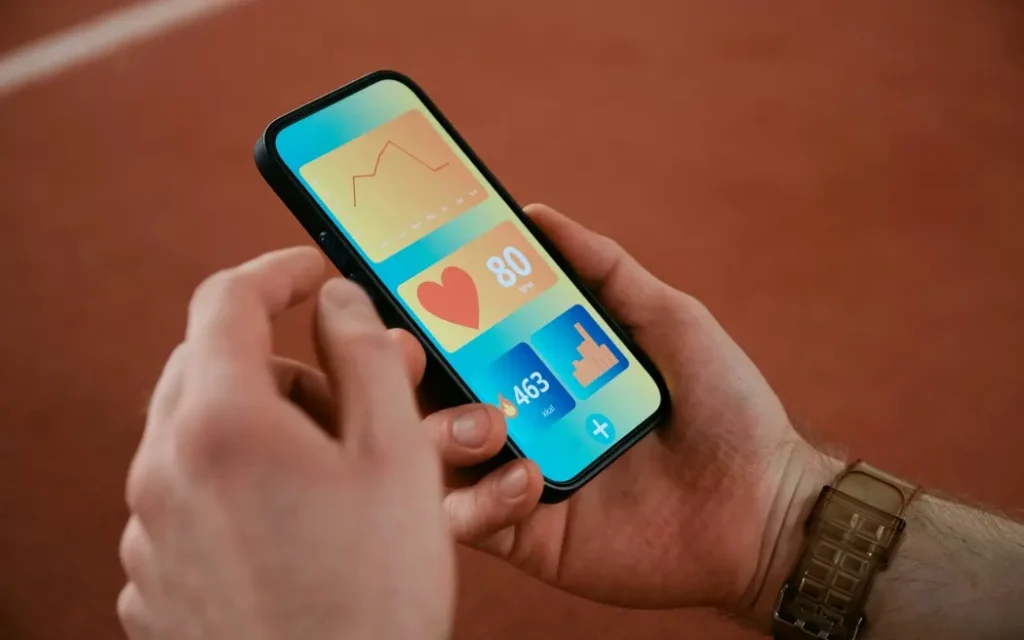
Once you have a well-functioning core experience, your fitness app development project is ready for the next stage. Gone are the days of basic tracking and workout plans. Users these days are looking for something that is smarter, more engaging, and personal. Thankfully, this is exactly what advanced features can be for you and your app, helping it stand out from the competition.
Here are the most effective features of modern fitness apps that will be utilized to produce memorable, high-impact, high-performance apps in 2025.
Advanced Features
| Feature | Description | Key Benefits / Examples |
| Gamification and motivation tools | Through the inclusion of points, badges, streaks, and leaderboards, you have reformulated the experience into something that is more enjoyable, rewarding, and engaging. | You now have a changed experience with sessions turned into small victories, heightened motivation, increased consistency and fun, and gamified competition. For example, one could earn a badge after training for 10 days straight. |
| AI-powered coaching and personalization | Leverages AI to deliver adaptive, intelligent coaching recommendations customized to the user’s data and profile. | Personalized workout recommendations, real-time support, voice-guided feedback, and form correction. Gives users a sense of support, coaching, and confidence. |
| Integration with AR, VR, and wearables | In order to augment or enhance the experience to be immersive and to enrich the interaction, augmented or virtual realities and wearables are used. | AR allows for digital coaches to be in your home; VR takes you from your living room to an exercise journey or experience. Wearables can track your movement and performance and give you feedback in real time to track progress and performance. |
| Nutrition and mental health modules | Integrates movement with overall healthy aspects such as mindful eating, stress management, and habit creation. | Habit trackers, reminders to hydrate, calorie trackers, mindful meditations, and encouragement to live a life of sustainable change beyond the fitness level. |
| The future of fitness experience | Leverage advanced characteristics to fuse technology and empathy, science and playfulness. | These characteristics help create native apps that become an ecosystem for lifestyle upgrades. They increase user engagement, motivation, and retention. |
To sum up, by investing in these advanced tools early, you’re not just building an app. You’re building a loyal community that grows with your brand.
Fitness Mobile App Development Process: From Idea to Launch

Creating a fitness app isn’t only about coding. It is a fun, rewarding, and complicated experience that includes elements of creativity, technology, and strategy. The successful fitness mobile app development is founded with an initial vision and ends with a focused and finely polished product geared towards your users. For those looking to build a digital product in the fitness industry, being familiar with the complete process of app development can save time and reduce the likelihood of failure. Let’s walk through how top fitness app developers approach the process from concept to launch.
Planning and Market Research
Every good app starts with a great idea, but the best apps started with thorough research. Jumping into the app development process without knowing who your users are or what problems you want the app to solve is not ideal.
You start by defining the target market, which could include athletes, fitness novices, and casual users. Then you will want to explore the competition—what’s working, what’s not working, and where are the opportunities? There are many tools available (App Annie, SimilarWeb, Google Trends) to help you find out more about the market.
Defining your Unique Selling Proposition (USP) will also help differentiate your app. This might be personalized content, gamified components, mental wellness, etc. The clearer the vision, the easier the development path.
UI/UX Design Principles for Fitness Apps
The design tells the story of your brand in silence. The application should be visibly engaging but even more importantly satisfy an intuitive experience. A UI that is cumbersome or confusing can kill motivation much faster than a missed workout.
The interface should be clean-looking, motivational, and easy to navigate. Use bright, energetic colors along with clean typography to improve ease and consistency when using icons. Don’t put too much information on a particular screen. Rather than providing users too much information at the start, lead users step by step to their personal goals and to exercise routines.
Make no mistake, anytime you engage with fitness, there are emotional feelings associated with the experience. The best designs elicit feelings of positivity, improvement, and focus on the element of progress with fitness, and that is why experienced fitness app developers work with professional designers to take care of every button, transition, and animation to improve user engagement and motivation in the environment.
Choosing the Right Tech Stack
The technology stack you choose is foundational for your fitness app development. The tech tools you select will impact the performance of your app, the ability to scale, and the ability to connect with other services.
Using a modern technology stack on the front end, as are currently available, is equally as important as a framework like Flutter or React Native for speed, flexibility, and sophisticated animations. By way of example, you would choose Swift for an application that is for iOS or Kotlin for an application that is for Android.
On the back end, you will use a framework or tool (like Node.js, Django, or Firebase) to facilitate aspects like storage, user authentication, and in-app real-time sync properties.
You will want to do some research for third-party integrations, particularly if you expect to connect to wearables, AI analytic tools, and payment systems. Your application will need to have the capability to connect to APIs (like Google Fit, Apple HealthKit, or Strava) to make your application seem like you are making a dynamic, seamless, data-driven application.
Development Timeline and Milestones

Having a solid plan, along with a realistic timeline, will keep your project from getting out of control. Generally speaking, most fitness mobile app development projects go through these stages:
- Discovery and planning (2-4 weeks). This phase is about establishing goals, features, and specifications.
- Design and prototyping (4-6 weeks). The design phase usually consists of wireframes and creating user flow for testing the experience.
- MVP development (8-12 weeks). This refers to your fitness app’s core version featuring needed specifications.
- Testing and optimization (4-6 weeks). Once your fitness application is developed, it’s time for QA, performance testing, and user testing.
- Full product launch (6-9 months). You have built your completed product for your compatible device and are ready to launch your app and do minimal post-launch updates.
Each of these milestones validates your team is working together on scope, accomplishments, and timelines. But this should be an easy process if you’ve chosen the right fitness app development company or have paid competent and skilled professionals.
Fitness App Development Services: Costs and Key Factors
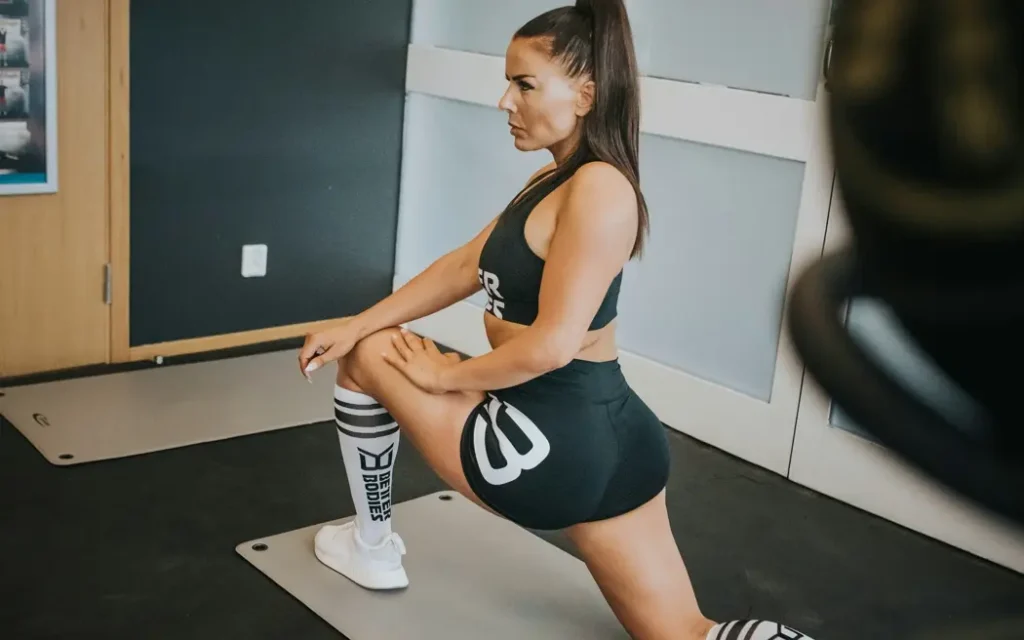
So, what’s your budget for fitness app development? This is usually to be one of the first questions you will ask—and rightfully so. Knowing your budget ahead of time helps you manage your expectations and avoid surprises down the line.
The overall cost to create a fitness app varies based on features, technology, and the skill level of the fitness app developer or health and fitness app development company you choose. Here is a step-by-step breakdown, starting with cost.
Cost Estimations
There is no set price, but we can offer some estimates.
- An MVP (Minimum Viable Product): $25,000–$50,000. An MVP is a simple version of your app that consists of onboarding, a workout program, and some workout activity tracking. An MVP is a great first step for a start-up or anyone looking to verify their concept.”
- A full-feature app: $80,000–$200,000+. Full-featured apps add even more capabilities, such as AI coaching, social community features, AR/VR workouts, or nutrition modules.
- An enterprise-grade platform: $250,000 and up. Enterprise-grade platforms are made for established or larger fitness brands, which may need access on multiple platforms, integrations with wearables, or large-scale analytics.
While these are ballpark figures, they demonstrate one thing—the more complex your app is, the more development resources you will need.
Aspects Affecting the Cost of Developing a Fitness Application
- Scope and functionality.
- Platform type.
- Complexity of design.
- Size and quality of team.
- Integration.
- Post-release updates for maintenance.
Cost vs. Quality
While it may seem appealing to keep costs down by saving money on the price of your app, you may end up paying more in the long run in repairs and lost users. The goal is not to spend less money—it is to spend wisely. Work with a reputable and experienced partner in the fitness space who can deliver a secure, high-performing, high-quality, and scalable app.
The right fitness app developers don’t just code—they think strategically about your product’s growth and user engagement. And that’s exactly what separates successful apps from those that fade after launch.
From Idea to Launch: Your Own Turnkey Fitness Service

Establishing a fitness app from the bottom up can be thrilling. But it can also be a long and difficult process. What if you could do it faster without compromising quality? That’s where a turnkey solution comes in.
Your Own Fitness Platform in Weeks
With a turnkey service, your app is now bigger than an idea—it is now a live product that your audience can use. This is an important feature, especially if your goal is to focus your time and effort on content creation, coaching, or community building and not programming an app. Prebuilt systems allow you to focus on what matters most—engaging with users, providing value, and growing your business.
Scrile Connect is one of the best turnkey solutions for fitness entrepreneurs. Its focus is specifically for helping creators, coaches, or brands to develop their own digital fitness platforms fast and easily. In the next section, we will discuss how Scrile Connect works, the benefits of using Scrile Connect, and why it can be a good strategy for managing your fitness business.
Scrile Connect: Launch Your Own Fitness Platform Effortlessly
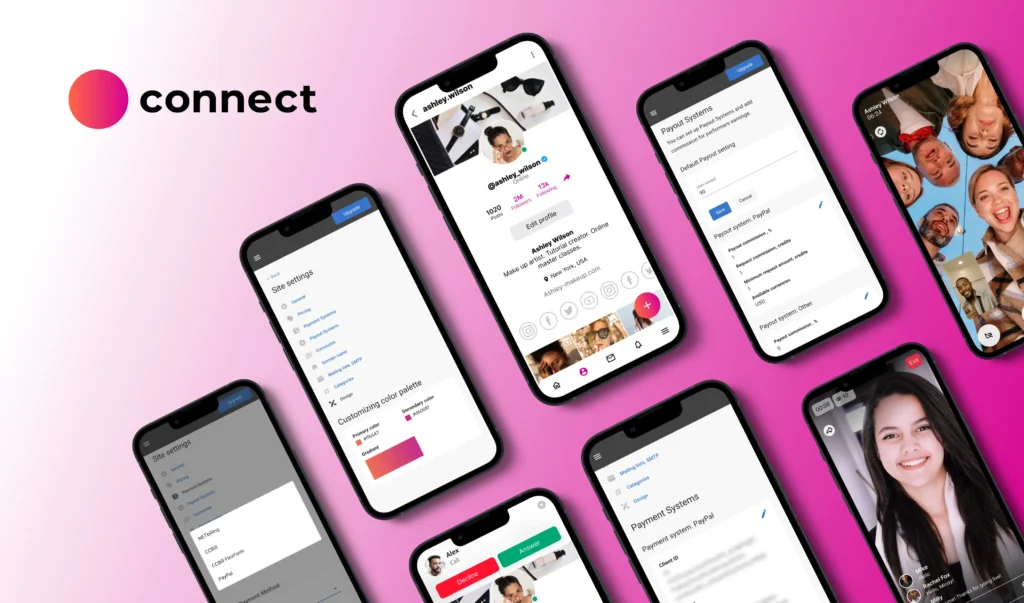
If you’re excited to implement your fitness idea into a fully working app without the headache of having to code it from scratch, then we have the solution for you—Scrile Connect.
Designed for fitness coaches, content creators, and entrepreneurs, Scrile Connect is a turnkey platform that allows you to build a branded fitness service very quickly and easily, giving you more time to work on your fitness business.
What Is Scrile Connect?
Scrile Connect is a white-label platform that provides all the essential features you need to launch a digital fitness business. Rather than starting at ground zero, you will have a full working platform that is flexible and scalable. The platform supports membership, distribution of content, video streaming, messaging, and payment processing—everything a modern fitness app needs to succeed.
The platform is designed for usability and to grow. It offers you the option to create a unique experience for your users while keeping back-end management simple and easy to use. This way, you can focus on engaging your users and not deal with technical issues.
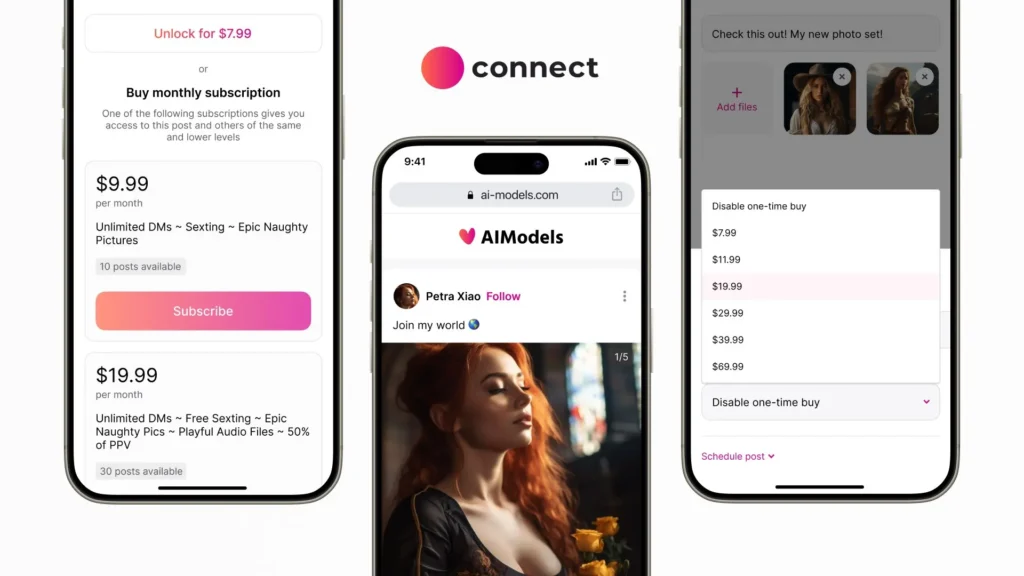
Scrile Connect Key Benefits
- Quick launch.
- Custom branding.
- Scalable architecture.
- Safe payments.
- Content monetization.
With these features, it’s possible to create a fully functioning service such as a fitness ecosystem without the expense or time of a custom app developer.
Why Use Scrile Connect for Fitness App Development
Scrile Connect is not just a tool; it will be a partner in your success. It gives you an established, professional, and reliable framework while letting you be creative and remain in control. This platform will highlight your growing digital brand, whether you’re a coach or launching your first app or if you are a business adding to existing digital services. Scrile Connect is there to achieve your goals with a successful service.
Ready to launch your own fitness platform without developing it from the ground up? Get started with Scrile Connect today and build a digital fitness experience your users will love! Start a free trial or contact our team to learn more about Scrile Connect.
FAQ

How to develop your own fitness app?
To create your own fitness app, it’s best to blueprint it. Start by identifying which type of app you’d like to create (workout tracker, yoga guide, AI-based personal trainer, or even a mixture as a platform for fitness). Having a focus will not only help you differentiate your app but will also engage your target audience.
Then, script the content (workouts, nutrition plans) to be engaging and feel personal with motivating instructions for the users to easily follow. Determine how you would like to monetize your app (subscription model, freemium model, or in-app purchases).
Finally, decide whether to hire fitness app developers, a health & fitness app development company, or a turnkey solution like Scrile Connect.
How much does it cost to develop a fitness app?
The cost of creating a fitness app can vary widely between $50,000 and $150,000. A lean, minimum viable product (MVP) or baseline-level features like activity logs, tracking, and social engagement mechanisms can keep your costs at the lower end of estimates. At the same time, apps with more complex functionality, like AI or coaching supplemental features, subscription management, gamification mechanics, AR/VR functionality, video capabilities, and the like, can push project fees above the estimates given.
Are fitness apps profitable?
Definitely, fitness apps can be profitable. However, if you want to be successful, you will have to put in a significant amount of thought, energy, and quality into your application. This is especially true because most of the revenue in this category is generated from just a few handful of apps, and building a presence in the market means working on creating a path that is differentiated with a thoughtful approach to user retention.
In reality, fitness and wellness apps that provide personalization, gamification, or community features tend to perform better than a generic in-app tracker. There are many monetization strategies to begin earning money with your app, including subscription models, premium or paid content, in-app purchases, or virtual currency. All of these strategies have been shown to lead to reliable revenue streams in the fitness app space.
Technology solutions such as Scrile Connect now help creators and entrepreneurs as they enter into this space with more flexibility and very little technology costs. If approached properly, your fitness app could not only generate revenue but also create a long-term, loyal, and engaged community.